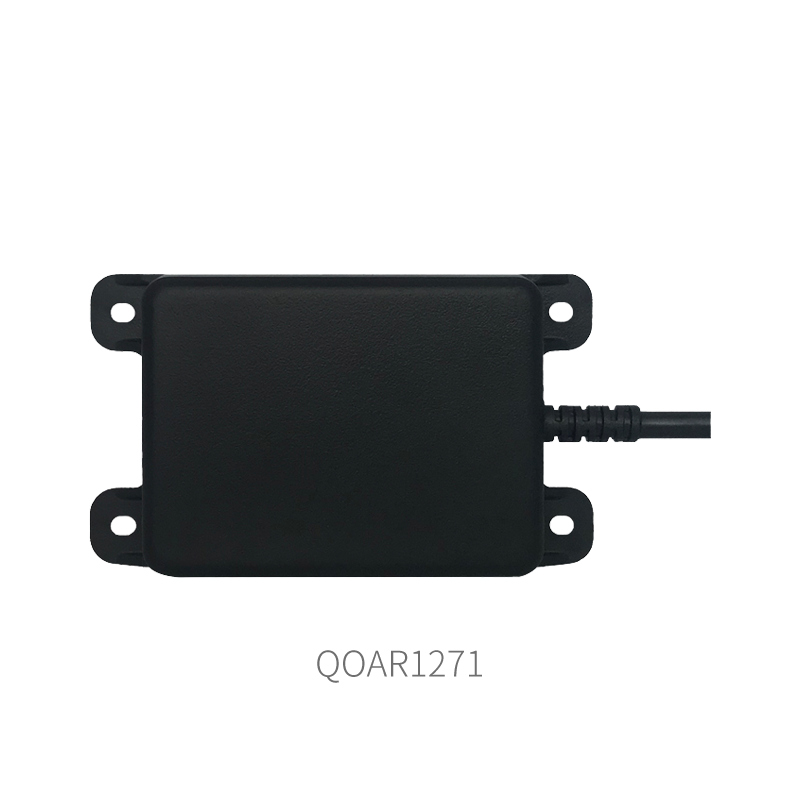Product Details
Functions
The market positioning of QOAR1271 Obstacle Avoidance Radar is to provide reliable information about obstacles ahead for UAVs so as to guide UAV flight control systems to avoid obstacles reasonably. This product is a compact 79GHz ranging radar developed by Xiamen Insightica Technology Co., Ltd. It adopts a near and far dual-beam antenna design, and is small in size, high in sensitivity, stable in performance, light in weight, and easy to integrate. QOAR1271 Obstacle Avoidance Radar can meet the application needs of unmanned flying platforms, helicopters, small aircraft and other fields, as well as reliably sense and report obstacle information on the forward path for UAVs to ensure safe flights.
Features
With far and near dual-beam switching technology, precise perception of small targets
Adopt MIMO system with sensitive angular resolution
Low output power, no potential radiation risk to human body
Dynamic data sensing only, no privacy violation
Applications
Obstacle avoidance for UAVs and robots
Classic Applications
The vast majority of UAV accidents are related to the inability to perceive surrounding obstacles and avoid them in time. 79GHz UAV Obstacle Avoidance Radar QOAR1271 developed by Xiamen Insightica can effectively detect small obstacles in the forward direction, greatly improving the safety of UAVs, and can be applied to a variety of UAV obstacle avoidance scenarios:
Plant Protection
For UAV plant protection operations, the main obstacles are electric wires that cross the field and surrounding trees. Since the UAV mainly carries out forward and backward flights when operating plant protection, the requirements for the front and rear obstacle avoidance ability are extremely high.
After installing a QOAR1271 Obstacle Avoidance Radar respectively in the front and the rear of the plant protection UAV, the UAV can rely on the obstacle avoidance radar in the current direction to report whether there are wires or trees in the forward direction to determine whether it needs to slow down or brake when it is flying forwards and backwards. Thereby greatly reducing the occurrence of plant protection flying bombing accidents. QOAR1271 has a sensitive angle resolution capability, which reduces the false alarm rate and improves operation efficiency while ensuring safe operation.
Line inspection
For UAV line inspection, the main obstacles are electrical towers and wires, as well as tall trees. The UAV needs to hover and take pictures near the electrical tower when operating line inspection. Since the pilot is far away from the electrical tower and the UAV, the UAV needs to have a certain ability to avoid obstacles autonomously in the forward direction. QOAR1271 can detect small components on high-voltage cables and electrical towers 15m away, and even obstacles that are extremely difficult to be detected by the detection tower, effectively avoiding accidents of UAVs hitting cables and electrical towers.
Flying Obstacle Avoidance in Urban Environment
Police UAVs, aerial photography UAVs, and etc. need to fly in an urban environment. Urban flight faces various obstacles such as wires, trees, buildings, light poles, signal lights, and flyovers. In the harsh electromagnetic environment with complex reflection characteristics, there are high requirements for anti-interference and multi-target tracking capabilities of UAV aircraft. QOAR1271 Obstacle Avoidance Radar has high sensitivity and is fully capable of handling the harsh electromagnetic environment of urban flights, accurately detecting small targets 15 meters away. It can cooperate with the flight control to achieve autonomous obstacle avoidance, which greatly reduces the false alarm rate, thereby ensuring that the UAV can fly flexibly in an urban environment.







